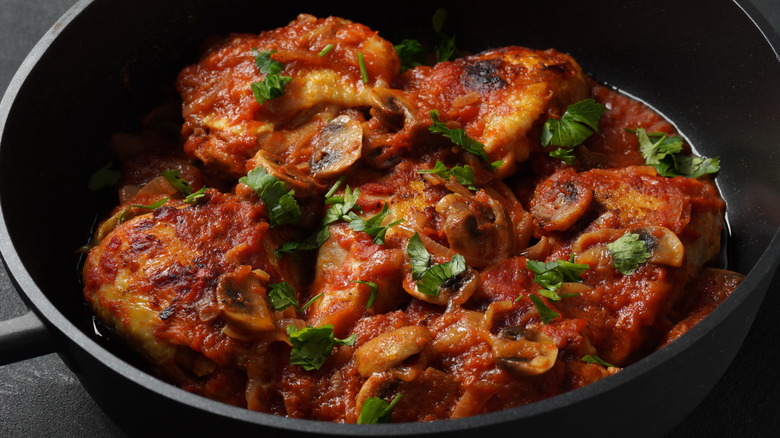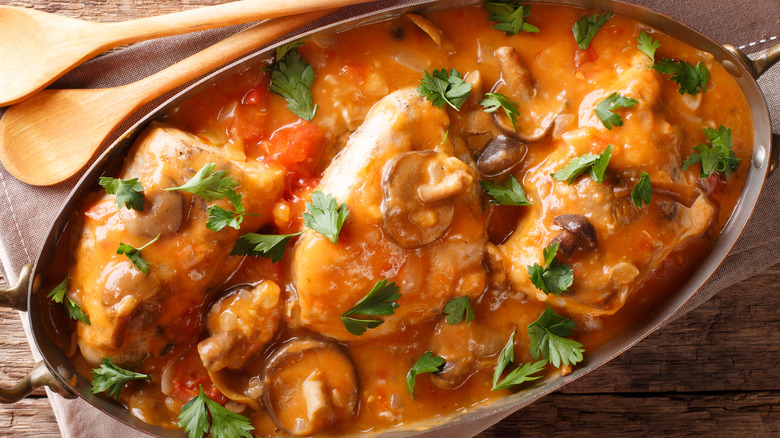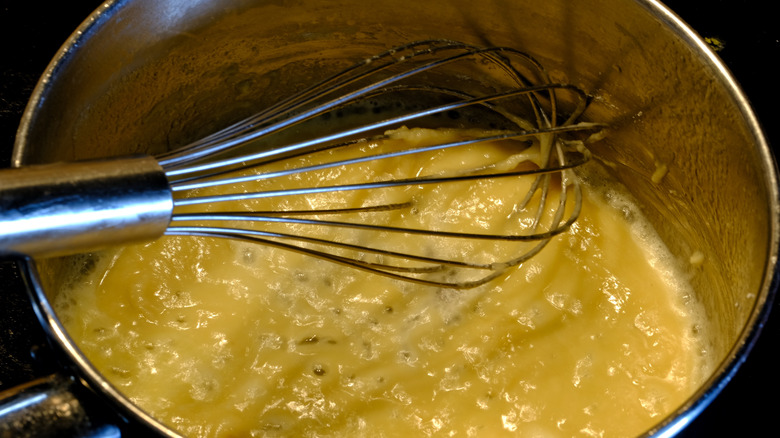Chasseur Is The French Sauce Originally Created For Game Meat
Much of French cuisine simmers down to a type of sauce — five of them, in fact. Called mother sauces, these foundational recipes are the base for a diverse array of flavorful creations. While chasseur isn't one of the original five, the modern version is based on one of them: Espagnole sauce — or demi-glace, a rich brown beef-stock-based sauce.
As well as the demi-glace, chasseur is also crafted with mushrooms, tomatoes, shallots, and white wine, and its decadent taste defines whatever dish it is added to. In fact, that's what lends it its name — hunter's sauce. In centuries past, it always accompanied game such as rabbit, venison, or wild birds. Some say that the hunters also collected the mushrooms that go into the sauce.
Chasseur still continues to be served with a variety of proteins today. Its dense consistency beautifully coats whatever it is paired with and adds a tasty dose of mushrooms in the process. Let's dive into how the spectacular chasseur came about.
History of chasseur sauce
Chasseur sauce's exact origins are unclear. Some credit it to Duke Philippe De Mornay, a 16th-century writer, pope, and politician, who's also linked with the creation of bèchamel sauce. These medieval origins also make sense with the name. Back when hunting game was more common, sauces were specifically crafted to match (and sometimes mask) the meat's bold flavors.
However, chasseur may be a newer invention. Since it's built around demi-glace, some think it emerged as a spin-off of Espagnole, one of the five mother sauces. Espangole has only officially existed since the 19th century, although similar brown sauces have been created in France since the 1600s.
Regardless of how it came about, chasseur sauce melds excellently with a variety of dishes. It normally goes with poultry, usually chicken. But it is also served with omelets, beef, meatloaf, and lamb. And some still eat it with game birds and venison. While it takes some effort to craft, the rewards are worthwhile.
How is chasseur sauce made?
Chasseur sauce starts with butter, in which shallots and white mushrooms, typically creminis, are sautéed. Once these are softened, the pan is deglazed with a generous pour of white wine or dry vermouth. The liquid is then simmered until it concentrates in flavor. Next, either canned or fresh tomatoes are mixed in, along with a pre-prepped demi-glace. Some chefs (and most home cooks) will forgo the labor-intensive demi-glace component, instead thickening the sauce with flour and beef broth, in the style of a roux. Alternative thickeners include cornstarch or cream. Regardless of what thickener is used, the heat is reduced, and the sauce is simmered down once last time. Some may add butter for a richer version. With a sprinkle of parsley, chasseur sauce is done.
The sauce can be ladled over prepared food, or ingredients can be added to the pan. Chasseur keeps well — its high-fat content reheats well. The sauce can be stored in an airtight container in the fridge for up to a week. So prepare a batch in advance and then spoon it onto everything from roast chicken to a morning omelet.


